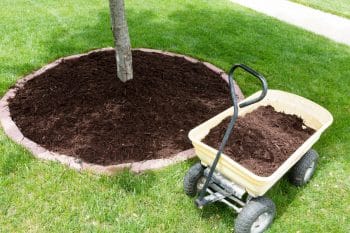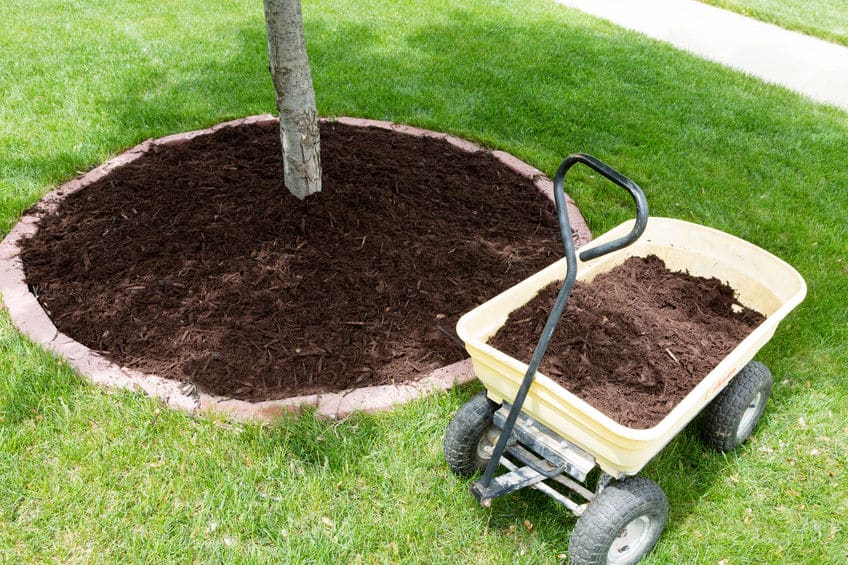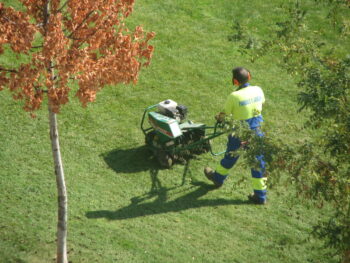 As winter draws near, any attentive gardener knows this shift comes along with specific measures to be taken in the interest of maintaining the health of one’s plants- both large and small.
As winter draws near, any attentive gardener knows this shift comes along with specific measures to be taken in the interest of maintaining the health of one’s plants- both large and small.
On one hand, nature has successfully withstood the seasonal changes, without any help from us humans, for millenia. Yet on the other hand, we have been gardening, landscaping, and otherwise cultivating the plants around us according to both our agricultural needs and our aesthetic preferences, for a very long time.
This means that, quite often, we create situations in which the plants we’ve lovingly nurtured really do need a bit of care in order to continue thriving.
Varying weather patterns, soil conditions, and water limitations all contribute to a plant’s potential dependence upon the person who’s placed them in that particular set of circumstances.
At Ryno Lawn Care, we want to be sure you are well-equipped to care for your entire yard throughout the year. For this reason, we’ve developed a to-do list that covers the basics of winterizing your trees and shrubs.
1. Pesticide Treatments
Complete all necessary pesticide treatments early on in the fall. This way, your trees and shrubs are not left “hungry” and vulnerable over the winter.
Healthy plants have a far greater chance of withstanding the winter than those which are already compromised. Our Tree/Shrub Insect Program is perfect for jobs like these.
2. Watering Schedule
Continue watering your lawn, plants, trees, and shrubs right up until the first freeze. The amount we recommend for grass- about an inch of irrigation at a time- holds true for trees and shrubs as well.
3. Fertilizer Treatments
Do some research to estimate when your region is expecting your first winter frost, and consider the weather patterns you’ve seen in previous years. Plan on applying your final fertilizer treatment about 6 weeks prior to the initial freeze.
This schedule ensures that your trees and shrubs will remain healthy throughout the fall, while preparing to go dormant over the winter. Some grasses benefit from a final treatment mid-winter, but this typically isn’t the case for larger vegetation.
4. Anti-Transpirant Spray
Anti-transpirant spray works much like a sealant for paint, or an antiperspirant for humans. That is to say, it helps lock moisture into a plant’s leaves and smaller branches. Be sure you purchase the right product, as anti-dessicants are meant specifically for deciduous plants (and are deemed largely unnecessary by some experts).
Anti-transpirants should be applied once the temperature begins hitting lows of 40*. Continue applying monthly throughout the winter. Pump sprayers can come in handy when covering large areas.
5. Mulching
Mulch can help insulate topsoil as the ground progressively cools. However, it should not be piled up directly against the trunk of a tree or shrub. Simply place a shallow spread around the plants, that covers 1-2 feet of surrounding ground space.
Sawdust, compost, tree bark, and wood chips can be utilized for winter mulching. Rocks can be used for mulching as well, but they may not be the best choice for regions that experience harsh winters.
6. Pruning
Prune dead twigs and branches, preferably early in the fall season. Be sure you include potted plants in this chore, and don’t forget to remove any dead bark from trunks. The idea here is to get rid of organic matter that may begin to rot.
You also need trim back branches that may break under the weight of snow or ice. This is especially important for branches near roofs, siding, fences, and power lines.
7. Wind Protection
For wind protection, set up wooden stakes around smaller trees and shrubs. Be sure they’re anchored deeply enough that they can withstand a strong gust. Tarp or burlap can then be wrapped around the stakes and stapled into place.
Protecting taller trees that still have somewhat limber branches, binding them with twine is sufficient. This method is also effective for deciduous trees that are naturally more cold-hardy, and therefore need less insulation.
8. Frost Protection
To ward off winter frost, shrub jackets and tree wraps are available at your local home and garden store. There are a variety of sizes available to fit plants as large as saplings, and as small as potted greenery.
These “jackets” are easily removed, which is advantageous during the vacillating weather patterns of late winter. Random warm snap? Buildup of ice or snow on the wraps? Just remove them, clean as necessary, and put them back into place until they’re no longer needed.
Final Thoughts
No one wants to 9 months cultivating a beautiful yard, only to have winter freeze out all of your beautiful efforts, leaving you back at square one next spring. This situation is entirely avoidable if you take the right steps to winterize your trees and shrubs before Jack Frost arrives.





